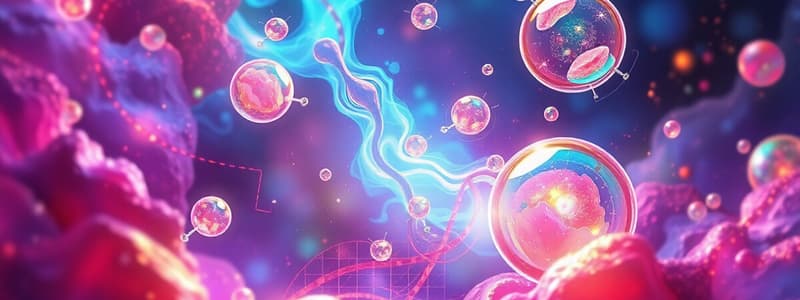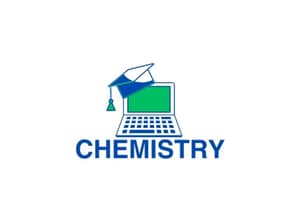Podcast
Questions and Answers
Which property is characteristic of ionic compounds?
Which property is characteristic of ionic compounds?
- They have low melting points.
- They conduct electricity when dissolved in water. (correct)
- They are insoluble in water.
- They consist only of non-metals.
What is the difference between cations and anions?
What is the difference between cations and anions?
- Cations are neutral atoms, anions carry a positive charge.
- Cations are positively charged, anions are negatively charged. (correct)
- Cations are formed from non-metals, anions from metals.
- Cations are negatively charged, anions are positively charged.
Which of the following describes a binary ionic compound?
Which of the following describes a binary ionic compound?
- It consists of two metals.
- It is made of a metal and a non-metal. (correct)
- It contains multiple polyatomic ions.
- It includes only non-metal elements.
What happens in a complete combustion reaction?
What happens in a complete combustion reaction?
What is the result of a neutralization reaction?
What is the result of a neutralization reaction?
What occurs during corrosion?
What occurs during corrosion?
In covalent compounds, the bonding occurs through what mechanism?
In covalent compounds, the bonding occurs through what mechanism?
Which of the following is true about multivalent ionic compounds?
Which of the following is true about multivalent ionic compounds?
Flashcards
Ionic Bonding
Ionic Bonding
A chemical reaction that involves the transfer of electrons between two or more atoms or molecules, resulting in the formation of ions.
Ionic Compound
Ionic Compound
A compound formed by the electrostatic attraction between positively charged cations and negatively charged anions.
Covalent Bonding
Covalent Bonding
A chemical reaction that involves the sharing of electrons between two or more atoms or molecules, resulting in the formation of covalent bonds.
Combustion
Combustion
Signup and view all the flashcards
Complete Combustion
Complete Combustion
Signup and view all the flashcards
Incomplete Combustion
Incomplete Combustion
Signup and view all the flashcards
Neutralization
Neutralization
Signup and view all the flashcards
Corrosion
Corrosion
Signup and view all the flashcards
Study Notes
Ionic Compounds
- Ionic compounds are formed by positively charged cations and negatively charged anions.
- They are usually soluble in water.
- They conduct electricity when melted or dissolved in water.
- Ionic compounds have high melting points and are hard and brittle.
- Binary ionic compounds are formed from a metal and a nonmetal.
- Multivalent ionic compounds involve transition metals with varying charges. Use Roman numerals to indicate the cation's charge.
- Naming: The cation is named first, followed by the anion. Change the anion's ending to "ide".
Covalent Compounds
- Also known as molecular compounds, covalent compounds are formed by nonmetals.
- Atoms share electrons in covalent bonds.
- Covalent compounds tend to have weaker bonds than ionic compounds.
- They are typically insoluble in water.
- They do not conduct electricity.
Chemical Reactions
- General Reaction: AC + BD → AD + BC (Example: AgNO₃ + KCl → AgCl + KNO₃)
- Combustion: A reaction where a substance reacts with oxygen to produce carbon dioxide, water, and energy.
- Example equations are provided (CH₄, C₈H₁₀, C₇H₇, C₁₂H₂₂).
- Complete combustion produces only CO₂, H₂O, and energy.
- Incomplete combustion produces a mix of CO₂, CO, C, H₂O, and energy.
Neutralization
- An acid and a base react to form a salt and water. The pH approaches 7.
- Example equations are provided (HCl + NaOH, HNO₃ + KOH).
Corrosion
- Corrosion is the breakdown of metals due to reactions with their environment.
- Corrosion can be helpful, such as forming a patina on copper that protects roofs.
- Corrosion can also be detrimental. Rust on iron weakens the metal over time.
Studying That Suits You
Use AI to generate personalized quizzes and flashcards to suit your learning preferences.




